Hello everyone and welcome to another week of Shattered Perceptions. Normally my aim to look into an underplayed general, crafting my own version of the deck by delivering you with a deck skeleton and the unavoidable drive to complete it as you see fit. This week I am spotlighting an underplayed general, but not because I have an interesting spin on, but because I think the “on-rails” approach to it makes for a very fun deck aimed towards anyone who enjoys complex stack interactions and be deceptively political. This week, I will be returning to an age of Magic long passed and am talking about Blind Seer.
Blind Seer
Blind Seer came out of Invasion with a design that has been explored very lightly in the history of Magic: changing colors. It made a bit of sense for the block—Magic’s first attempt at multi-colored matter theme—but at the same time seems to exist for the purpose of open-ended possibilities. In truth, I generally like these kinds of legendary creatures because Wizards leaves us to our own devices to try to make sense of unique card however we see fit. So while I can’t rag on the design within the context of the whole of Magic design, my confusion really comes from the flavor of the card. You see, within the realm of the story, the Blind Seer is actually Urza in disguise—yes, the head planeswalker from Unstable.
Why is changing the properties of spells and other things what Urza does as he pretends to just be a normal wizard? I don’t know—maybe MaRo does.
Nonetheless, what we have this week is less of a mystery to solve and more of a full on audition for anyone who hasn’t yet seen a rundown of what Blind Seer does as an EDH deck. This deck is looking to sit back and slowly build up the resources to play around with the pace of the game in a way that does a lot less saying “no” while still being mostly a control deck. The deck does a good job of highlighting a strategy that really hasn’t been explored much since Eighth Edition. I’m excited to introduce this easy-to-construct deck to a wider audience.
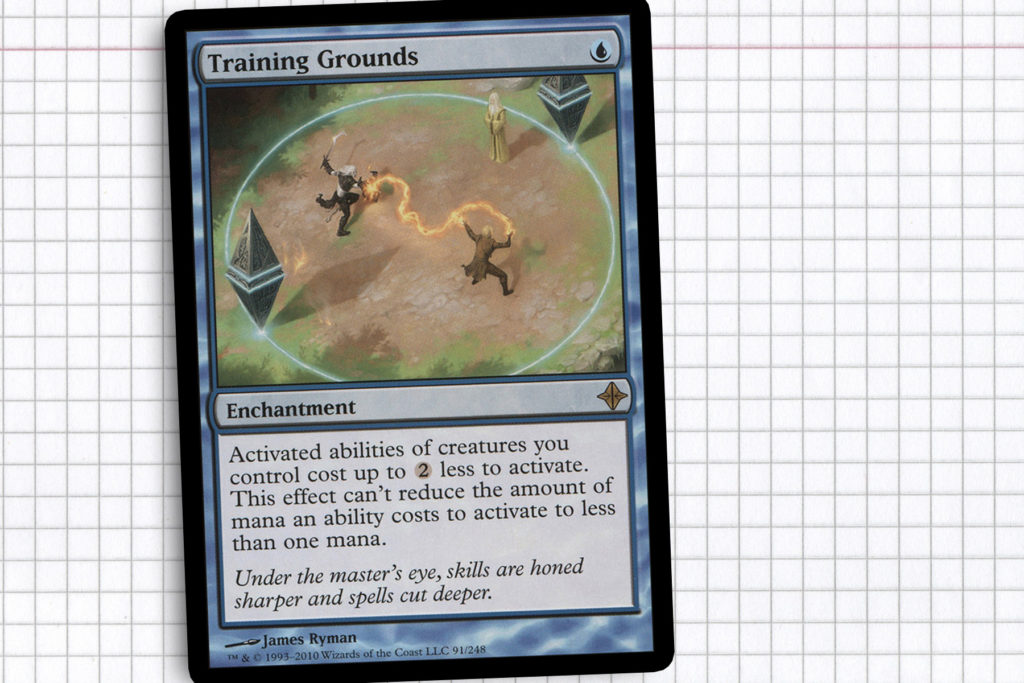
Discount Bin
To get this deck running on overdrive right away, it is very important that we include Heartstone and Training Grounds. While both will also fuel creatures like Thassa, God of the Sea or Arcanis the Omnipotent, the main use is to reduce Blind Seer’s ability as much as possible. I wouldn’t normally advise putting cards in with such limited scope in your deck, even if they are linked to general, but this interaction is far too paramount, because we may be required to use large swaths of mana to control the board at instant speed. While our opponents might benefit from the Heartstone, we should be better equipped to take advantage of it.
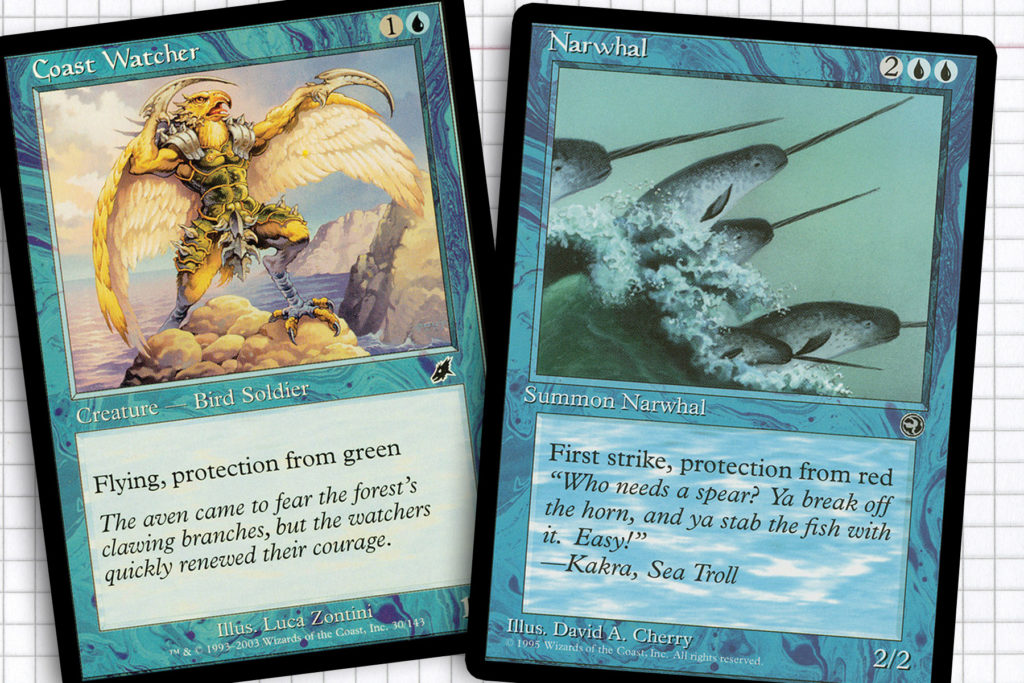
Blue Skies
Protection creatures: Weatherseed Faeries, Narwhal, Suq’Ata Firewalker, Aven Smokeweaver, Cerulean Wyvern, Coast Watcher, Treetop Sentinel, Oraxid, Sea Sprite
The above suite of creatures is the core of our aggressive path to victory and our way of protecting ourselves from attackers, which is saying something as they barely average more than two power each. The important part is that they mostly fly and have protection from a color. Since our general can set spells and creatures to whatever color we want, they are essentially hexproof and indestructible when we’re playing reactively.
The effect these can have on a game is rather surprising, to be honest; people see your general and assume that it will do some shenanigans, but in a few turns, most of their removal is dead and attacking into you is unprofitable. These creatures buy you tons of time and the risk of your general messing with the board often fends off a lot trouble, keeping your mana open for casting spells as the turn cycles around the table.
As the game drags on into the twilight turns, casting Favorable Winds will often make it so you can start closing out the game with large piles of damage. Overall, these are about your only options, as Wizards has moved away from protection as an evergreen effect, but they all pull their weight pretty well.
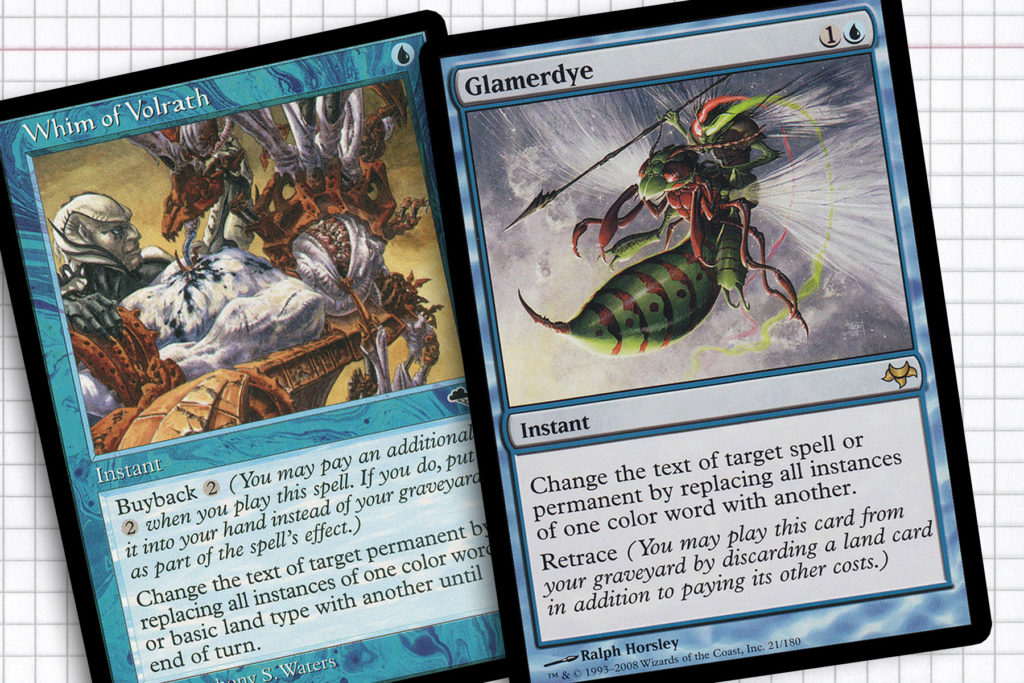
Red with Envy
Text Replacement: Glamerdye, Sleight of Mind, Mind Bend, Prismatic Lace, Alter Reality, Whim of Volrath
It’s not uncommon to come across a creature or enchantment with protection from blue, hexproof, or shroud in Commander. And though I have yet to see someone try to win a game via Helix Pinnacle, I have seen a few Goblin Piledrivers running around. On occasion the answer might be changing your Waterfront Bouncer to some color other than blue, but other times you may need to find creative alternatives like the above suite of cards, plucked from the history of Magic for their useful abilities to change the text of a card, like giving our Cerulean Wyvern protection from white in a pinch.
While not always the most useful cards you’ll use during a game—sometimes these will get stuck in your hand for longer than you like—the times when you do need them can be a blowout, like changing the text on Mind Harness to capture Akroma, Angel of Wrath for a turn.
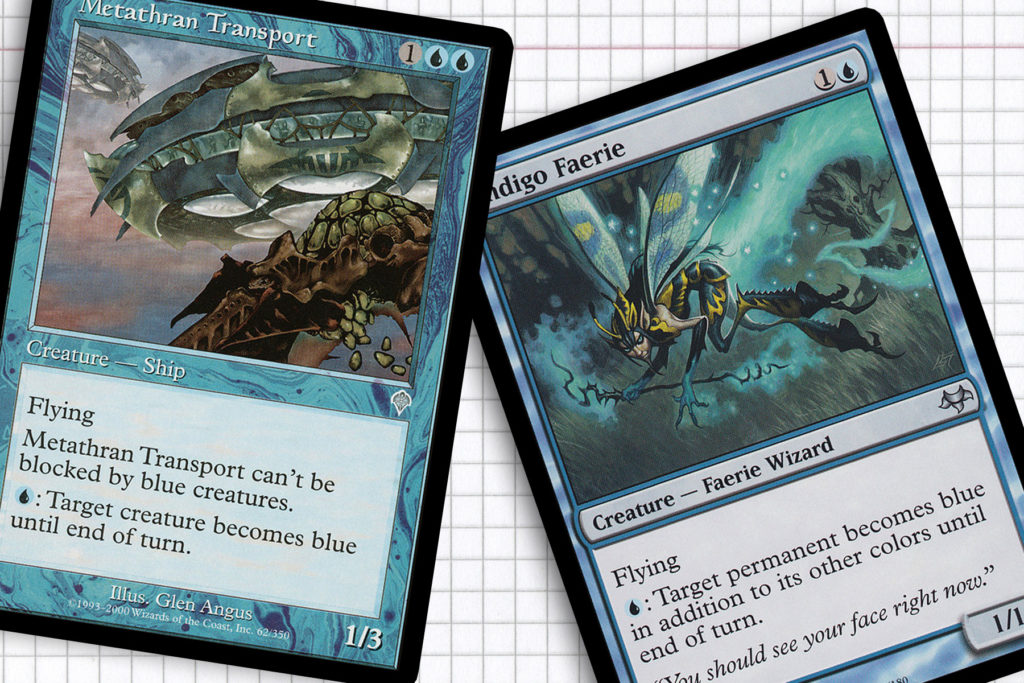
Choose A Color
Redundant Color Changing: Sway of Illusion, Vodalian Mystic, Prismwake Merrow, Fylamarid, Metathran Transport, Indigo Faerie, Tidal Visionary, Shifting Sky, Crystal Spray, Shell Skullkin
Next up, we have a suite of cards that all can act like Blind Seer if the general gets too expensive to cast or if we get tight on mana. Most of this suite comes from the Invasion block—having not played during this time, I have no idea if this strategy had any place in the Standard or Extended metagames of the early 2000’s.
The first of these cards that ever caught my attention was Tidal Visionary. The card might have been what sparked my love of merfolk from the very beginning, when I discovered it in 2003 its effect seemed odd, but I saw a chances to pair it up with one of my Circles of Protection to make it so that I could blank at least one creature during each rotation of the table. Back then we were fighting solo Thorn Elementals, so that meant a lot more than it does now.
Changing colors became a theme again in Shadowmoor, which made a little bit more sense to me, as the color of a creature was more important than it might have been in Invasion block. The suite of cards themselves do a very good job manipulating a part of the game that most people never think about and can become a lot more political than one might expect. In this case though, the effects of Shell Skullkin and Indigo Faerie are much more restrained and only allow you to set things to blue. Either way, this makes more control over the board and can easily bleed into our next suite of cards.
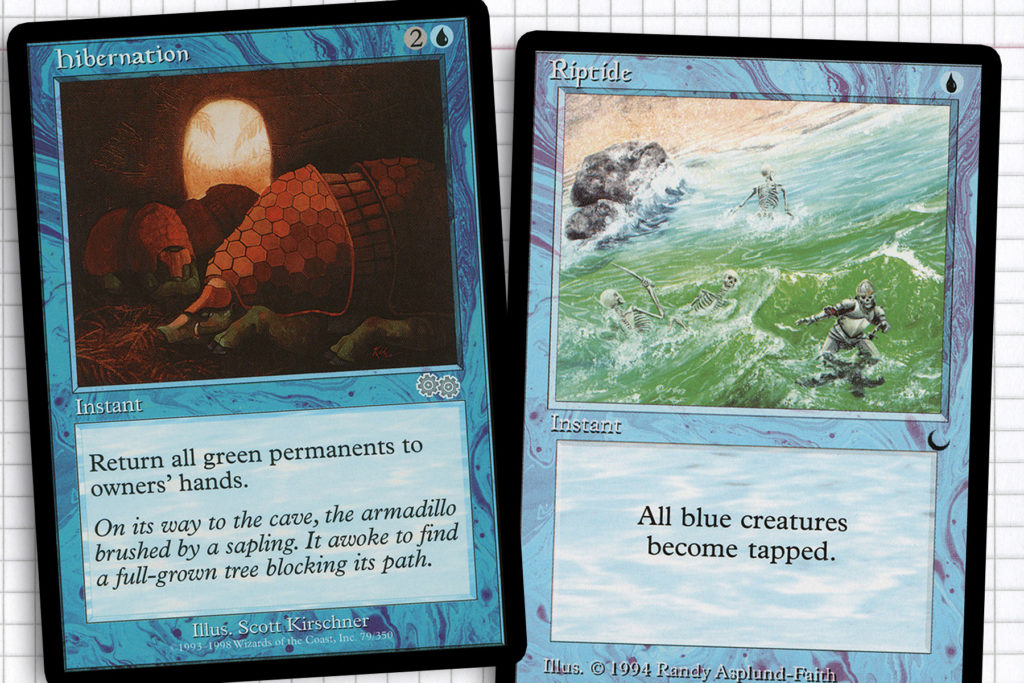
On Theme Bounce
Color Specific Control: Inundate, Riptide, Wash Out, King Crab, Ether Well, Consign to Dream, Boomerang, Barrin’s Unmaking, Hibernation
While the case can be made that changing all of our opponents’ stuff to blue might only be relevant in the case of Wash Out and Riptide, both can be devastating if cast at the right time. Playing politics and changing a key creature to blue can allow it to attack after an Inundate, all at the cost of set up comparable to a Cyclonic Rift. You can also feel safe in the agreement, because you can freely change its color to something you have protection from at a moment’s notice.
I understand why cards like Ether Well, Consign to Dream, Barrin’s Unmaking, and Hibernation don’t tend to see a lot of play; but even without set up, the potential of all four can be very potent, even as printed. What can’t be overstated is the level of control we are able to exert on the game, being able to remove problem permanents seemingly at will can only help to legitimize our presence in the game.
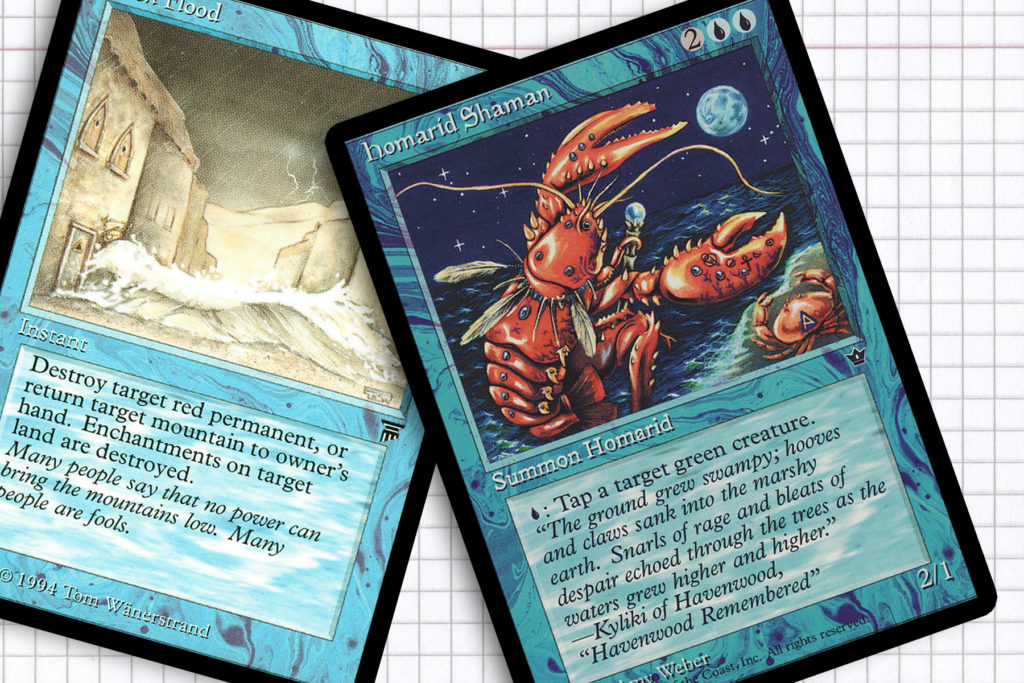
Stop. Hating is Bad
Color Hating: High Seas, Hydroblast, Flash Flood, Blue Elemental Blast, Insight, Tidal Control, Homarid Shaman, Chill, Wrath of Marit Lage
During the early years of Magic each color did a decent job removing some of their enemies’ best tools; red could Boil away Islands, white penalized black for its Swamp count with Karma, and green had Lifeforce to counter black spells. Blind Seer as a deck gets to revel in this part of the early blue color pie, with the combination of our general and/or several of the aforementioned suites of cards, we can make many of the hate cards could from these early years of Magic work on most things on the stack or the battlefield. This is where the deck can really shine, giving an advantage to those who are creative enough to think of ways to solve their problems.
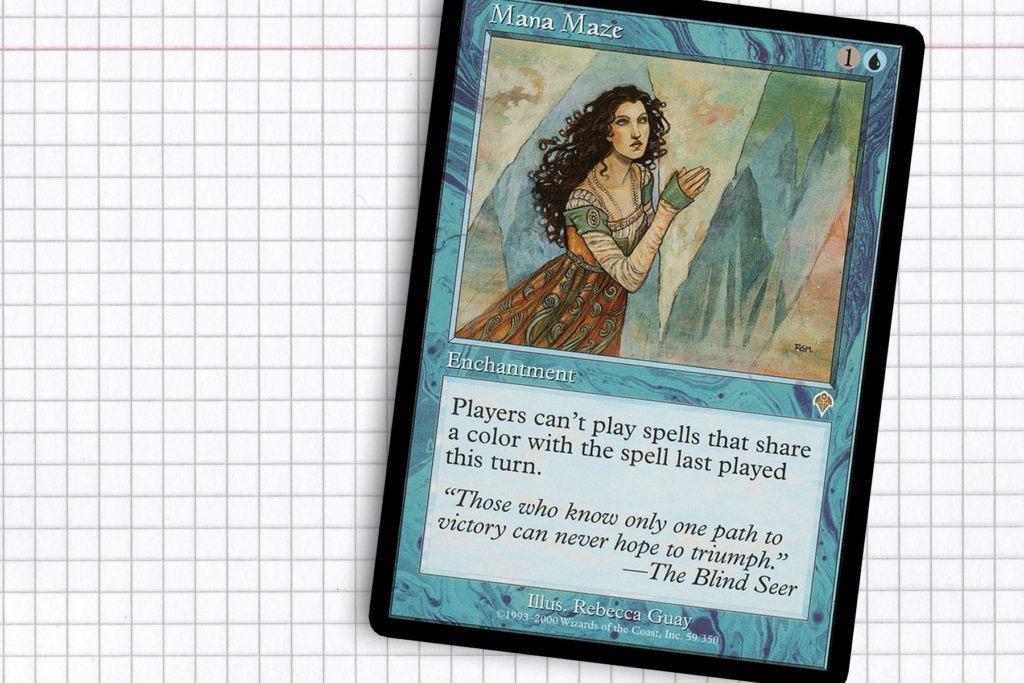
All Stars
Capping off this week’s article, I wanted to highlight some of the cards that don’t really fit into suites, but still are workhorses none the less. Well-Laid Plans is card that only sees play in this deck and some Group Hug lists, but it does some impressive work at slowing games down, allowing our deck time to accumulate resources due to unprofitable attacks.
Azami, Lady of Scrolls is a very good card in most decks and it’s near-unbearable as its own deck. In practice, this card has allowed for me to always have a full grip of cards and acts a lot like a Sensei’s Divining Top without grabbing as much attention. With a health amount of reprints, it’s also not hard to come by.
Lastly, Mana Maze is one of those cards that keeps people scratching their heads. Admittedly it can be annoying and does reduce interaction, but it is proactive and might be better color shifted into white. Unfortunately, changing the color of a spell on the stack doesn’t reset what color spell had last been played (from Gatherer: “If a spell’s color was changed while on the stack, use the color at the time it was when you started announcement, not as it currently is on the stack or as it was at the time it resolved”) but for most part this hidden gem does a great job of simply buying time.
The mechanics behind Blind Seer are of a bygone era in many respects, playing in space the game shies away from besides the occasional card like Trait Doctoring from Dragon’s Maze. For players looking to find a deck and slowly tune it to their liking, this might not be the deck for you, its solved and really doesn’t have a reason to change. But it you are looking to have a deck with less raw power and board presence, this might be the kind of deck you’re looking for. I have had this deck around for the last year and every game is always different and few ever result in my feeling like I didn’t contribute to the game. I enjoy the deck, I think people enjoy watching it be played and overall, even though it stalls a lot, the control elements tend to get overlooked by the sheer level of perceived originality. Have fun all, see you next week.

